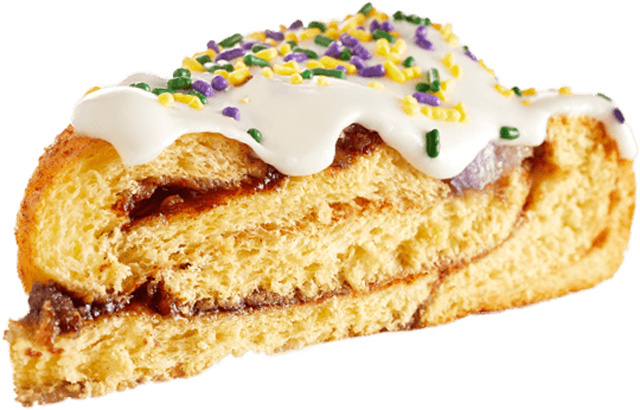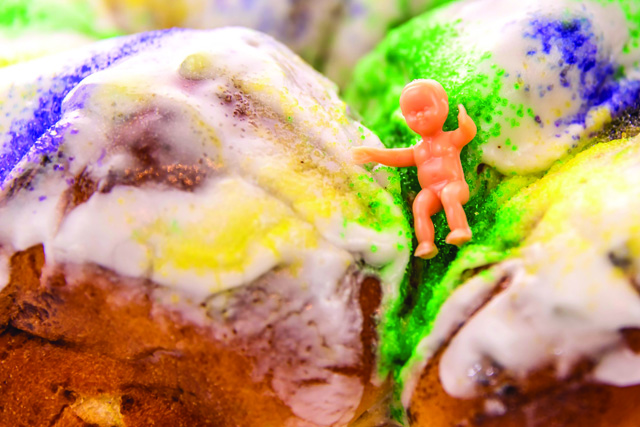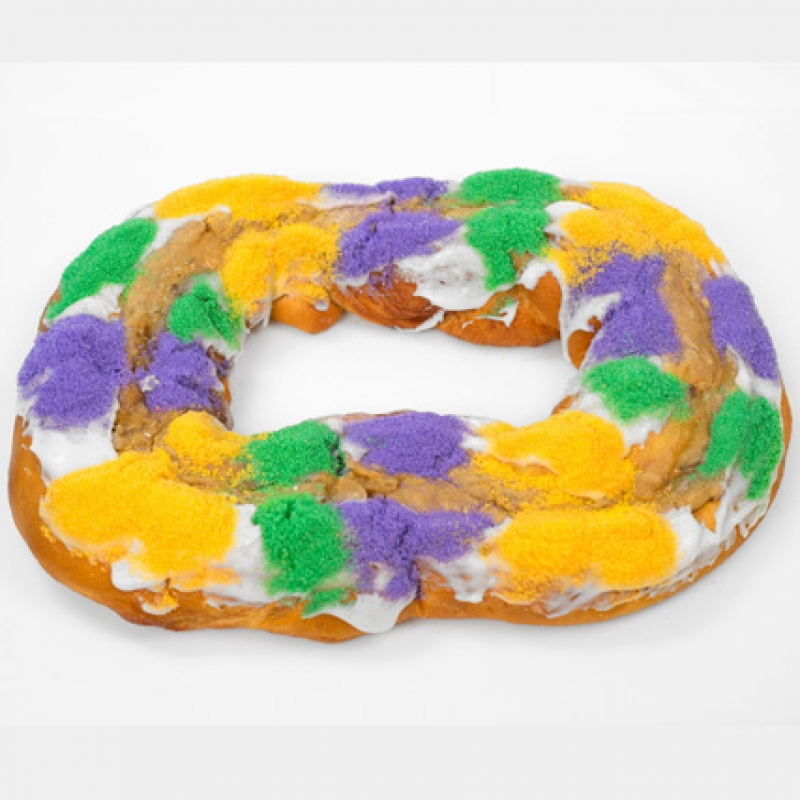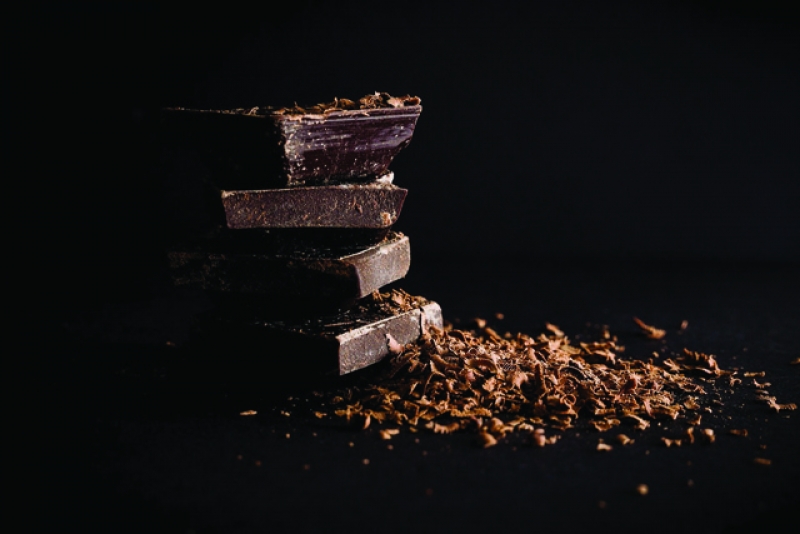- Written by Marcella Escarfuller
- Published in NOLA Food
King Cake
King Cake
By Marcella Escarfuller
Click aqui para español- > King Cake
The King Cake, named for the three kings of the Nativity, is a symbol of the Epiphany, or Twelfth Night of Christmas (January 6), and the arrival of the magi to worship the baby Jesus in Bethlehem. The Epiphany – which marks the beginning of Mardi Gras, aka Carnival – is celebrated in cultures all over the world, each with their own take on the King Cake.
The traditional pastry originated in Old World France and Spain and became associated with the Epiphany during the Middle Ages and the rise of the Catholic Church. It was introduced in the southern United States by Basque settlers in 1718.
In France, the galette des rois is the tradition in northern France, made of a round puff pastry tart with an almond-paste filling. In Spain and Latin America, the rosca de reyes is the inspiration for the king cakes we know and love stateside: a ring of sweet, doughy bread garnished with candied fruit to resemble the crowns of the magi. Today, more than 30 countries around the world observe the Epiphany with their own versions of the King Cake, including Portugal, Greece, Bulgaria, and the United Kingdom.
King Cakes are more than just delicious, sugary goodness that’s enjoyed worldwide. Every detail of the King Cake holds symbolic significance relating to the story of the Epiphany. So, the next time you pick up your favorite King Cake, don’t forget what it’s all about.

THE SHAPE
The King Cake’s ring-like shape symbolizes the love of God, which has no beginning and no end.
THE COLORS
Traditional King Cakes were made to resemble crowns, with candied fruit placed as gems would be. Red for love, green for peace, and yellow for happiness. The official colors of Mardi Gras were established in 1872 by the Krewe of Rex, and symbolize justice (purple), faith (green), and power (gold).
THE BABY
The plastic baby hidden inside each cake symbolizes the baby Jesus when Joseph and Mary were instructed by God to hide him from King Herod, who wanted to kill the Christ child.


























